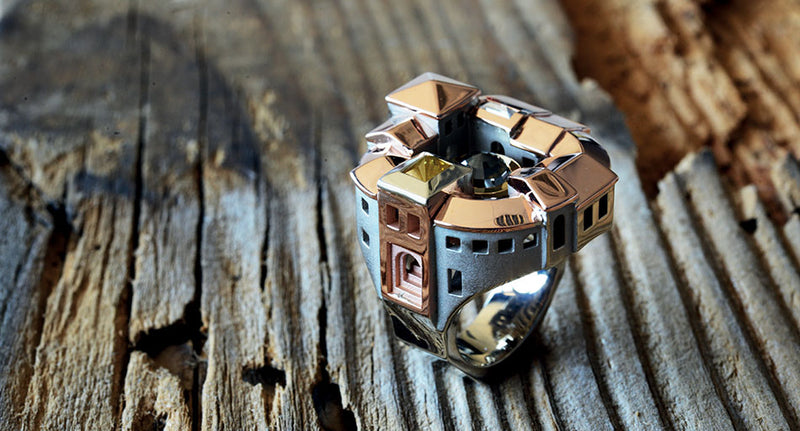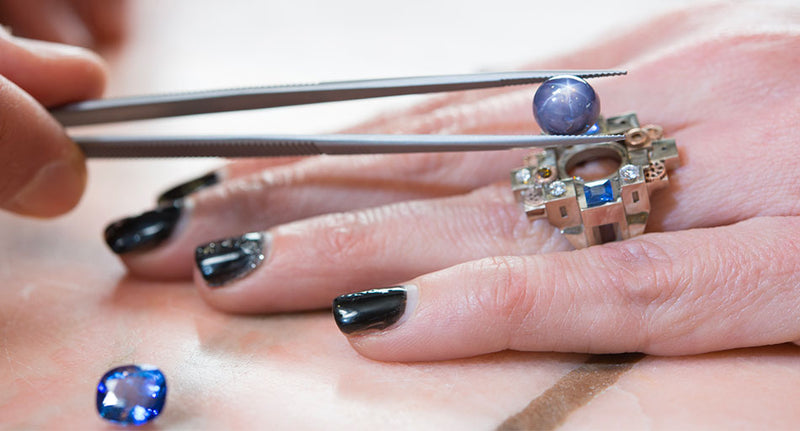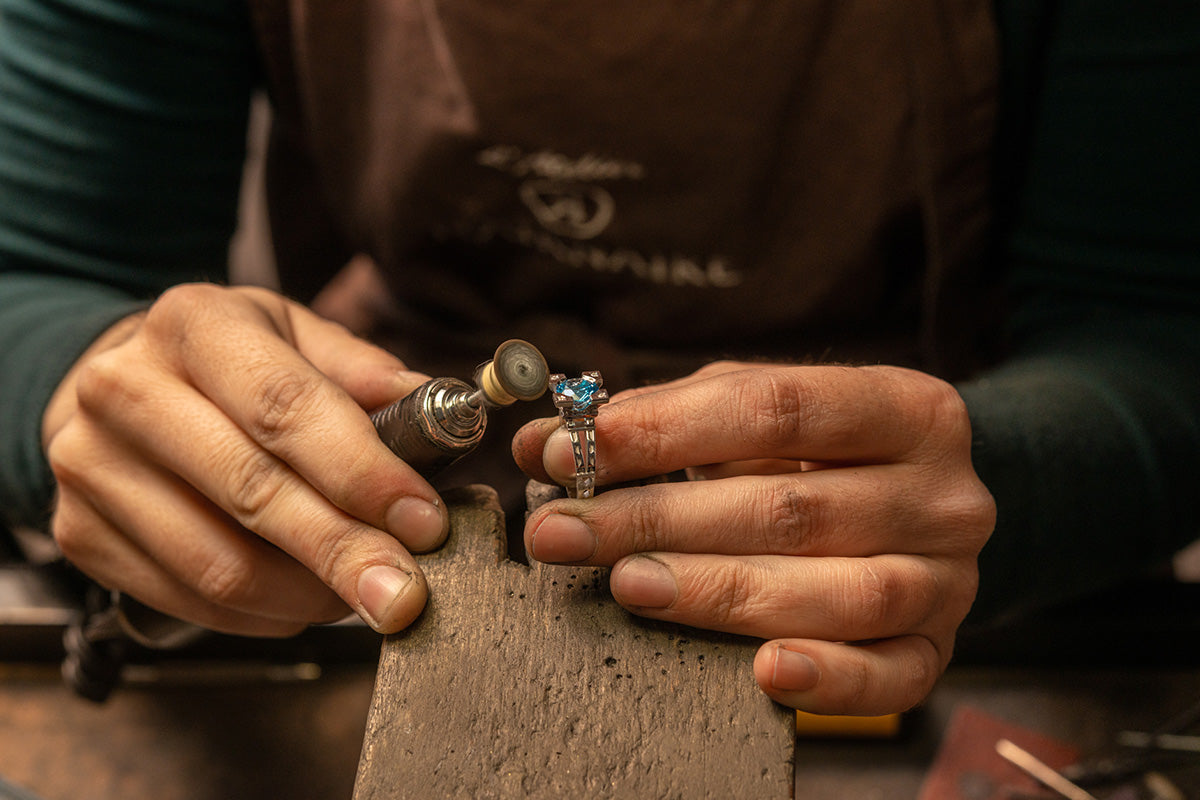JEWEL FINISHING
Once the gemstones have been set, it's time for the finishing polish. This is the final touch, allowing the perfectly polished metal to regain its full brilliance. Final touch-ups are made, and any post-setting flaws are ironed out. The jewel is then cleaned in an ultrasonic bath.
The final stage of a Jewellery
The last human intervention before commercialization is hallmarking. A guarantee of quality, the hallmark identifies the metals used and the workshop where the jewel was made: it's our signature. Finally, the final result is meticulously observed, passing through a draconian quality control to detect any defects. The finished jewel must be beyond reproach before it goes on sale.
At Jewellery Tournaire , we are fortunate to have the entire production process integrated in-house, from the idea that germinates in the mind to the creation and sale. We mix ultra-modern techniques, such as 3D, with ancestral techniques (lost-wax casting).
Having in-house production means that, as well as being able to create whatever we want, we can guarantee high-quality products and a bond of trust with our customers. As far back as we can remember, man has always made jewelry. To mark his passage, to evoke something or to symbolize his success. Generally speaking, he has been fascinated by what he found in nature, particularly beautiful stones.
But these are just stones, chosen for their particular color or brilliance, which are then enhanced by cutting and polishing. The value we attribute to a stone is not necessarily related to its price; it all depends on the value we attribute to it, whether sentimental or commercial... Even a common stone can have value, depending on what it evokes in us. For example, if two lovers are walking on the beach and find a pebble together, it will have much more sentimental value than another stone. Price is often synonymous with rarity for a stone, for example, shells had a high market value for people who lived inland, as they were rare for those who didn't travel.
When I choose a stone, it's not just with the eyes but with the heart too, I choose it simply because it's beautiful. Its color has to "sparkle", the stone has to be alive. I don't choose a stone for its name, but for the optical effect it creates. But before I introduce you to the stones that make up what I call my color palette, I need to give you the keys to understanding how I look at stones.

The stones used in Jewellery are "gems", hence the name of the science that studies them: gemology. All elements beautiful enough to be set in jewelry are considered gems. It's important to distinguish between the different types of stones that exist. There are, of course, natural stones, found by man in nature with their own unique characteristics. Thanks to the evolution of techniques and research, there are also synthetic stones. These are man-made, but have the same physical, chemical and optical properties as their natural counterparts, such as synthetic sapphire. Finally, there are imitation stones, i.e. counterfeits of natural stones that can be both natural and synthetic. They imitate the appearance, color and optical effect of natural stones, but lack their chemical or physical properties. For example, synthetic zirconium oxide is the best-known imitation of diamond, but transparent glass can also be considered an imitation.
When choosing a stone, I take into account its physical properties, in particular its hardness, i.e. its resistance to scratching and abrasion.
To measure this value, we use the Mohs scale, with increments ranging from 1 for the softest, to 10 for the hardest. To give you an idea, gems with a hardness of less than 7 can lose their brilliance and polish over time, due to the presence of quartz in the ambient dust, but also because of the things we put jewels through when we wear them. Another important indication when choosing a stone is its weight. We mainly use the carat as the unit of mass of a gem, equivalent to 0.2 grams. This value has been used in the gem trade since antiquity. The word comes from the Greek "keration", the name of the carob tree seed renowned for its constant weight of around 0.2 grams. But there's a distinction to be made: carat is also used for precious metals such as gold, in which case it designates purity. Thus, 24carat gold is 100% pure, but soft, which is why 18 carat gold is more often used in Jewellery, like all the major brands. This gold is 75% gold, and the remaining 25% gives the alloy its hardness and color. This percentage may include silver, copper, palladium... in varying proportions.

Until 2002, the term "precious stone" was used to refer to diamond, ruby, sapphire and emerald. This was a historically arbitrary classification, which implied that there were precious stones and less precious stones... So, since February 1, 2002, all the qualifying terms of the old classification have been abrogated, and we now speak of "gemstones" to characterize all stones formed in natural deposits. This is the legislation, and I simply like to use the terms "stones" or "pebbles" to refer to these treasures. The jewels are designed according to the choice of stone; I can't afford to mount a gem that's too fragile if it's exposed to shocks, otherwise I adapt the jewel so that it's protected. Finally, the carat is important, as it directly influences the price of my raw material. But I don't choose a stone based absolutely on its size, as I always say: "Better a small pretty one than a big ugly one".
The guarantee of uncompromising craftsmanship
OUR TITLES AND LABELS







